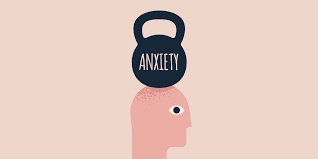Introduction:
Anxiety is a massive shadow that hangs over millions of lives. It casts its gloom everywhere, blocking out the light of happiness and hope. However, there is a glimmer of light—a light that is yearning to be found and nurtured—inside of this darkness. This piece delves into the process of casting light on anxiety and highlights the challenges, achievements, and transforming potential inherent in the human spirit.
Understanding Anxiety: Anxiety is a widespread and frequently incapacitating mental health illness that affects people of all ages and backgrounds. It is not merely a transient sensation of worry or trepidation. Anxiety has several forms, each with its own set of difficulties. These include social anxiety disorder, panic disorder, generalized anxiety disorder (GAD), and specific phobias. Anxiety is influenced by biological, psychological, and environmental factors, which emphasizes the need for comprehensive methods to management and therapy.
The Darkness of Anxiety:
Fear and uncertainty pervade every part of existence, casting a shadow on thoughts, feelings, and perceptions. It might show itself as racing thoughts, palpitations, perspiration, and avoidance behaviors that prevent one from participating in everyday activities. It can also emerge as constant concern. If anxiety is not managed, it can lead to a never-ending cycle of hopelessness that robs people of their happiness and sense of agency. It's a darkness that makes people feel helpless and confined by isolating, undermining, and warping reality.
Lighting the Darkness:
To light the darkness of anxiety, one must possess bravery, resiliency, and a readiness to face one's own inner demons. It starts with accepting that worry is a valid emotion and redefining it as a chance for personal development. It entails developing compassion and self-awareness and realizing that, even in the most difficult circumstances, there is always light within. To illuminate the darkness, one must embrace vulnerability as a means of gaining strength and empowerment rather than putting an end to fear or avoiding discomfort.
The Power of Mindfulness:
By providing techniques for developing acceptance and awareness of the present moment, mindfulness acts as a lighthouse on the path to shedding light on the darkness of worry. Techniques like body scans, deep breathing exercises, and meditation enable people to notice their thoughts and feelings objectively, making room for insight and clarity to arise. People can release themselves from the grasp of worry and re-establish a connection with their innate calm and quiet by centering themselves in the present moment.
Cognitive Restructuring:
Cognitive restructuring is an effective method for shedding light on anxiety by assisting people in recognizing and combating harmful thought patterns that fuel feelings of worry and alarm. Through cognitive-behavioral therapy (CBT), people can replace unrealistic and imbalanced viewpoints with more realistic ones by learning to identify cognitive distortions like mind reading, black-and-white thinking, and catastrophizing. People can break free from the cycle of anxiety and develop a stronger sense of empowerment and control by changing the way they think.
Embracing Self-Compassion:
Self-compassion is the discipline of treating oneself with kindness, understanding, and acceptance, especially in times of struggle and vulnerability. It is essential to the process of lighting darkness in anxiety. Recognizing one's humanity and accepting imperfection as a necessary component of the human experience are key components of self-compassion. It is about treating oneself with the compassion and consideration that one would extend to a close friend who is in need. People can develop resilience, find inner strength, and deal with anxiety's problems with dignity and grace when they practice self-compassion.
Seeking Support and Connection:
Seeking support and connection is crucial in the process of shedding light on anxiety's dark side. Finding people who can relate to and understand one's struggles—whether via counseling, support groups, or deep relationships—may provide one hope, encouragement, and validation. People come to understand they are not traveling alone and that help is there to get them through the dark times via the sharing of experiences and stories. People can find the strength and resilience to face their concerns and question their beliefs when they are surrounded by a caring group.
Conclusion:
there is light even in the darkest places. This light is there in each and every one of us and is just waiting to be found and developed. People can reclaim their life and shine a light on the darkness by accepting vulnerability with courage and compassion and admitting that worry is a valid emotion. People can develop resilience, nurture inner strength, and deal with anxiety's problems with grace and dignity by practicing mindfulness, cognitive restructuring, self-compassion, and connection. Therefore, let us answer the call to lighten the darkness
within, knowing that we have the ability to overcome any challenge by drawing strength from the depths of our hearts.


No comments yet